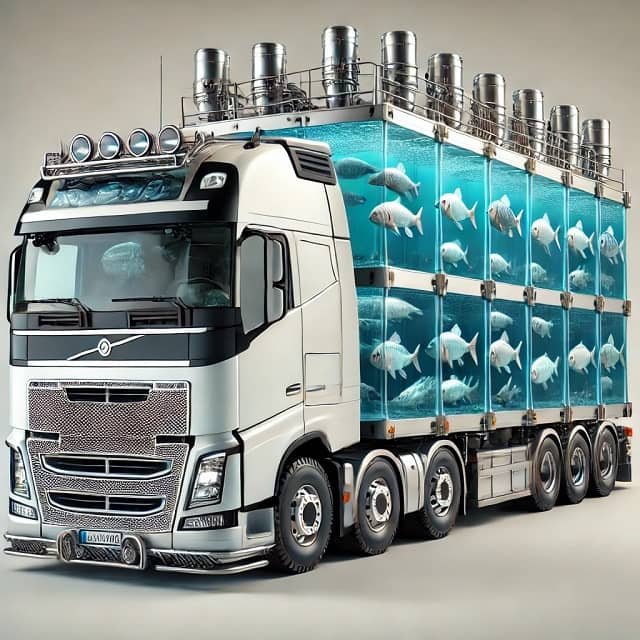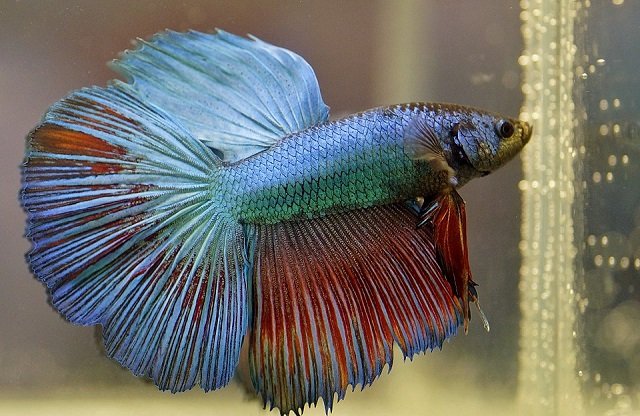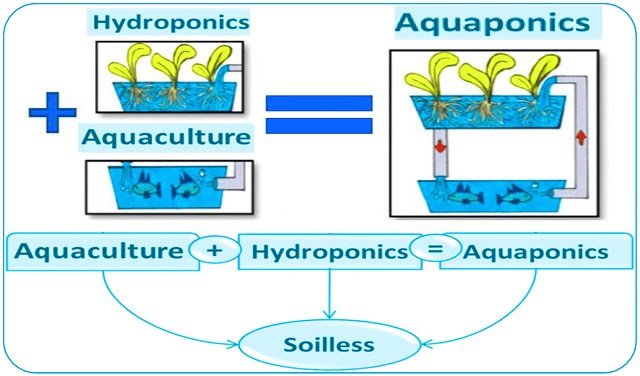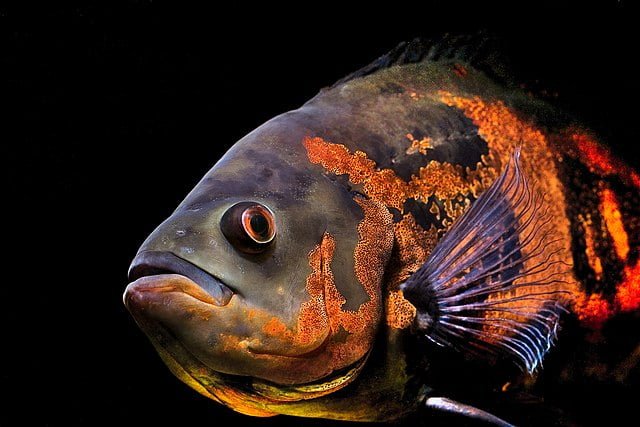
The transport of live fish is a complex and delicate practice that requires meticulous planning and the application of specialized techniques to ensure the animals’ survival and well-being. Whether it involves relocating aquarium fish to a new home, shipping valuable specimens for research, or distributing fish for aquaculture or consumption, understanding how to safely and efficiently transport live fish is crucial.
This article explores the various methods, containers, and essential considerations involved in live fish transport, covering both small-scale aquarium fish transportation and large-scale logistical operations for the aquaculture industry.
Live fish transport: A balance between logistics and animal welfare
- 1 Live fish transport: A balance between logistics and animal welfare
- 2 Challenges and risks in live fish transport
- 3 Biochemical effects of live fish transport
- 4 Crucial factors for successful live fish transport
- 5 Strategies to reduce fish stress during transport
- 6 Use of additives for live fish transport
- 7 Live fish transport methods
- 8 Types of containers for transport of live fish
- 9 How to transport live fish in different scenarios
- 10 Technology for live fish transport
- 11 Conclusion
- 12 References
- 13 Entradas relacionadas:
Transporting live fish is not as simple as packing animals into a container and shipping them. It requires a deep understanding of fish physiology, water quality, temperature control, and stress management. The primary goal is to minimize stress and maintain optimal environmental conditions throughout the journey.
Live fish are highly sensitive to environmental changes. Factors such as oxygen levels, water temperature, and stress can significantly impact their survival. Proper transportation ensures that the fish remain healthy and experience minimal stress during transit.
In this regard, the choice of live fish transport method, the type of container used, and the precautions taken can make a significant difference in survival rates and fish health upon arrival at their destination.
Challenges and risks in live fish transport
Transporting live fish presents several challenges, including:
- Oxygen depletion: Fish need oxygen to breathe, and improper packaging can lead to oxygen deficiency.
- Temperature fluctuations: Sudden temperature changes can cause shock and lead to death.
- Water quality issues: Waste accumulation during transport can cause ammonia spikes, which are toxic to fish.
- Stress: Fish are highly vulnerable to stress, which can weaken their immune system and lead to disease.
Biochemical effects of live fish transport
While essential, live fish transport exposes aquatic organisms to various stressors such as physical disturbances, changes in water quality, and handling. Duran and Çenesiz (2023) report that stressors trigger a series of biochemical reactions in fish, including an increase in reactive oxygen species (ROS) leading to oxidative stress, the secretion of stress hormones such as cortisol, and metabolic pathway alterations to meet increased energy demands.
Fang et al. (2023) observed that during the transport of hybrid giant grouper (Epinephelus fuscoguttatus ♀ × Epinephelus lanceolatus ♂) specimens for 48 hours, significant increases in total ammonia nitrogen (TAN), superoxide dismutase (SOD), catalase (CAT), glutathione peroxidase (GSH-PX), and malondialdehyde (MDA) were recorded in transported groups compared to the control group.
Stay Always Informed
Join our communities to instantly receive the most important news, reports, and analysis from the aquaculture industry.
Crucial factors for successful live fish transport
Before delving into specific methods, it is essential to understand the key factors influencing the success of live fish transport. Success depends on several critical parameters, including fish density, transport distance, fish size, and variations in oxygen (O₂), ammonia, and temperature (Rahman et al., 2022).
Water quality
Maintaining proper water quality is paramount. This includes appropriate levels of dissolved oxygen, pH, ammonia, nitrite, and nitrate. The accumulation of metabolic waste during transport can be lethal to fish. Ben-Asher et al. (2024) demonstrated the effectiveness of ion-adsorbent material, zinc hexacyanoferrate (Zn-HCF)-coated polyether sulfone (PES) granules, in controlling total ammonia nitrogen (TAN) concentration in wet transport of live aquaculture species such as gilthead seabream (Sparus aurata) and the edible brown crab (Cancer pagurus).
Oxygenation
Fish need oxygen to breathe. Ensuring an adequate oxygen supply is essential, especially during long journeys or when transporting large numbers of fish. Das et al. (2024) highlighted that providing a sufficient amount of dissolved oxygen is the most crucial element in keeping commercial-sized fish alive during transport.
Temperature
Water temperature must be maintained within the optimal range for the transported fish species. Sudden temperature fluctuations can cause stress and disease. Rahman et al. (2022) emphasize that temperature should not increase by more than 5°C per hour, and it is preferable to maintain it between 12–15°C for tropical and subtropical species.
Stress
Transport is inherently stressful for fish. Movement, vibration, overcrowding, and darkness can contribute to stress. Minimizing stress is crucial for survival.
Stocking density
The number of fish transported in a container must be appropriate for the container size and trip duration. Overcrowding can deplete oxygen and increase waste accumulation. For example, Rajesh et al. (2023) indicate that a stocking density of 230 g·L⁻¹ is considered safe for live transport of juvenile rainbow trout (Oncorhynchus mykiss) in plastic bags with super-oxygenated water for a duration of 10 hours at approximately 10°C.
Trip duration
The longer the journey, the greater the challenges in maintaining optimal conditions. Additional precautions must be taken for extended trips.
Acclimatization
Once the fish arrive at their destination, they must be gradually acclimated to the new water conditions to prevent shock.
Strategies to reduce fish stress during transport
According to scientific literature, there are several key strategies to reduce stress in fish during transport. These include:
Acclimating fish before transport
Gradually preparing fish for transport conditions can help reduce the impact of stress.
Optimizing transport conditions
This involves carefully controlling factors such as water temperature and oxygen levels to keep them within suitable ranges for the transported species. It is recommended to gradually lower the water temperature to reduce metabolic rate, oxygen consumption, and ammonia production. However, this must be done cautiously to avoid additional stress caused by sudden temperature changes. Ensuring sufficient dissolved oxygen levels is also crucial, considering that factors such as fish weight and water temperature influence their oxygen consumption.
Using compounds that reduce stress
Administering substances such as antioxidants and corticosteroid blockers has shown promise in mitigating biochemical changes induced by stress.
Minimizing air exposure during handling and loading
Air exposure, especially during loading into transport tanks, is identified as a highly stressful event, particularly for salmonids. It is recommended to use equipment such as transfer scoops designed to keep fish submerged and fish jet pumps, which are safer for their health.
Carefully managing loading capacity
The number of fish transported in a single container must be appropriate for water quality, species, and fish size. Reducing stocking density is advisable, especially for longer transports.
Monitoring and maintaining adequate dissolved oxygen levels
Systematic monitoring of oxygen levels throughout the transport process is essential. It must be considered that fish’s ability to utilize oxygen is affected by water temperature, pH, and metabolic byproducts. It is also important to note that stress can significantly increase oxygen demand in fish.
Use of additives for live fish transport
Salt
Salt is widely used in fish transport and can improve electrolyte balance in freshwater fish, mitigate stress responses, promote well-being, and prevent diseases (Luz & Favero, 2024). However, its effectiveness varies depending on species, fish size, transport method and duration, and concentration used.
Hana et al. (2024) determined that adding 5 grams of salt per liter of water significantly improves the skin health of Nile tilapia (Oreochromis niloticus) transported for five hours. Similarly, Martins et al. (2024) reported that 5 mg/L of clove oil (Syzygium aromaticum) combined with 3 g/L of salt is the ideal combination for transporting common carp (Cyprinus carpio).
However, Luz & Favero (2024) reported that fish of the order Siluriformes appear to be less tolerant to high salt concentrations compared to Characiformes and Cypriniformes. They indicate that concentrations ranging from 0.5 g/L to 8 g/L have been used for transporting various freshwater fish species.
Anesthetics
Anesthetics have the potential to reduce stress during transport (Purbosari et al., 2019) and handling, improving animal welfare and reducing morbidity and mortality. Luz & Favero (2024) mention several synthetic anesthetics (MS-222, benzocaine, lidocaine, metomidate, propofol) and natural ones (essential oils from various plants such as clove, Lippia alba, Ocimum basilicum, among others) that have been tested in fish transport.
The choice of the best anesthetic depends on its availability, cost, and optimal concentration for the transported species. For example, Rajesh et al. (2023) recommend mild sedation with clove oil (40 µL.L⁻¹ for 2-3 minutes) for transporting juvenile rainbow trout.
Boaventura et al. (2022) recommend adding 5 mg/L of benzocaine or 10 mg/L of eugenol to water to reduce ammonia excretion during the transport of pangasius (Pangasianodon hypophthalmus).
Felix et al. (2021) suggest that propofol is a promising alternative to MS-222 for the sedation of Nile tilapia during simulated transport, as it reduced stress-related responses without compromising health, welfare, or fillet quality.
Fang et al. (2024) explored the effects of Ocimum basilicum essential oil (EOOB) and ginger extract (GE) during the transport of the Pearl Grouper and found that concentrations of 10 mg/L of EOOB and 6 mg/L of GE reduced Total Ammonia Nitrogen (TAN), Dissolved Oxygen (DO), water pH, serum glucose (GLU), cortisol (COR), hepatic superoxide dismutase (SOD), catalase (CAT), malondialdehyde (MDA), and glutathione peroxidase (GPX).
Live fish transport methods
There are several methods available for transporting live fish, which vary depending on the scale of transport, the distance to be covered, and the type of fish being transported. Below are some of the most common methods:
Transporting live fish in plastic bags
For short-distance or short-duration transport, such as moving aquarium fish from a pet store to home, the most common method is to use special plastic bags for fish. These bags are typically partially filled (about one-fourth of the bag) with water from the original aquarium along with the fish, while the remaining space is filled with pure oxygen (Bocek & Gray, 2009). The bag is then tightly sealed to prevent leaks and to maintain an oxygen-rich atmosphere.
This method is suitable for short trips (usually a few hours) and for a relatively small number of fish. It is important to keep the bags in a dark place and at a stable temperature during transport to minimize stress.
✅ Advantages:
- Cost-effective and easy to use.
- Lightweight and compact.
- Can be insulated with polystyrene boxes.
❌ Disadvantages:
- Limited oxygen supply.
- Susceptible to leaks and punctures.
- Not ideal for large fish or long trips.

Transport of fish in water-containing and oxygenated containers
For longer trips or transporting a larger number of fish, larger containers filled with water are used. These live fish transport containers can range in size from small buckets to large tanks. The key to this method is ensuring adequate oxygenation of the water. This can be achieved through:
- Air Stones and Air Pumps: Similar to those used in home aquariums, these pumps introduce air into the water through porous stones, increasing the gas exchange surface.
- Pure Oxygen: Oxygen can be injected directly into the water through diffusers or by super-oxygenating the water before transport.
- Recirculation Systems: For very long trips, recirculation systems can be used to continuously filter and reoxygenate the water.
✅ Advantages:
- More durable than plastic bags.
- Can hold more water, reducing stress.
- Provides better temperature stability.
❌ Disadvantages:
- Heavier and bulkier.
- Requires proper aeration to maintain oxygen levels.
Dry or waterless fish transport (for Certain Species)
Although less common, some fish species that can tolerate short periods out of water can be transported under “dry” conditions or with very little water. This method is mainly used for certain catfish species or labyrinth fish that can breathe atmospheric air. The fish are kept moist in a porous material and provided with oxygen. This method requires considerable expertise and is only suitable for specific species and very short trips.
Air transport
Transporting live fish by airplane presents additional challenges due to pressure and temperature changes during the flight. However, it is a common method for long-distance transport, especially at the international level.
Fish intended for air transport are usually packed in plastic bags with oxygen, which are then placed inside rigid, insulated containers to protect them from environmental changes. Airline regulations and specific requirements for transporting live animals must be strictly followed.
Large-scale land transport
For commercial transport of large quantities of fish for aquaculture or consumption, trucks equipped with large tanks are used. These tanks are usually fitted with oxygenation systems, temperature control, and sometimes filtration systems to maintain water quality during transport. Route planning, travel duration, and scheduled stops for maintenance and monitoring are crucial in these large-scale operations.
Types of containers for transport of live fish
Choosing the right type of container for live fish transport is essential to ensuring their safety and well-being. Different container types are suited for different situations:
- Plastic Bags for Fish: Ideal for short-distance or short-period aquarium fish transport. They should be thick enough to prevent leaks and properly filled with water and oxygen.
- Buckets and Plastic Containers: Suitable for short to medium-distance trips. They should have secure lids to prevent spills and be large enough for the number of fish being transported.
- Plastic or Fiberglass Tanks: Used for large-scale transport, especially in trucks. These tanks can be customized with oxygenation, temperature control, and filtration systems.
- Insulated Containers: Essential for air transport and long road trips, as they help maintain a stable temperature and protect the fish from sudden environmental changes. They can be made of expanded polystyrene or other insulating materials.
When selecting a container, it is important to consider the size and number of fish, the duration of the trip, expected environmental conditions, and the ease of handling and cleaning the container.
How to transport live fish in different scenarios
The method for transporting live fish will vary depending on the situation. Below are some guidelines for different scenarios:
How to transport live fish in a car
If you need to transport live fish in a car, whether from a store or during a move, follow these steps:
Preparation
- Reduce fish feeding one or two days before transport to minimize waste production (Bocek & Gray, 2009).
Packing
- Use plastic fish bags for short trips or buckets with secure lids for longer trips. Ensure there is enough water from the original aquarium and space for oxygen.
Oxygenation
- If using buckets for longer trips, consider using a portable air pump that works with the car’s power outlet or batteries.
Insulation
- Place the bags or buckets in a cardboard box or insulated container to protect them from temperature changes and light. Avoid placing containers directly under sunlight.
Driving
- Drive carefully to minimize sudden movements and vibrations. Avoid sudden braking and acceleration.
Acclimatization
- Once at your destination, do not introduce the fish directly into the new aquarium.
- Place the bag or bucket in the aquarium for about 15-20 minutes to equalize the temperature.
- Then, open the bag and gradually add small amounts of aquarium water over another hour.
- Finally, release the fish into the aquarium, avoiding pouring the transport water into the tank.
How to transport live fish by plane
Transporting live fish by airplane requires thorough planning and compliance with airline regulations. This is typically done through specialized air cargo services for live animal transport. Key steps include:
Research
- Check airline regulations and the destination country’s requirements (for international flights).
Professional Packing
- It is recommended that packaging be done by professionals experienced in live animal transport.
- This usually involves using plastic bags filled with oxygen, placed inside rigid, insulated containers.
Documentation
- Ensure you have all necessary documents, such as import/export permits, health certificates, and airline shipping documentation.
Booking
- Book transport well in advance and ensure the flight is direct or has minimal layovers to reduce travel time.
Drop-off and Pickup
- Arrange for fish drop-off at the airport and pickup at the destination.
- Make sure someone is available to receive the fish immediately upon arrival.
Acclimatization
- Follow the same acclimatization process as car transport once the fish reach their final destination.
Transporting aquarium fish
Aquarium fish transportation can happen in various situations, such as moving, selling, or transferring fish between tanks. The basic principles remain the same: maintaining water quality, oxygenation, and minimizing stress.
For long-distance moves, professional packaging or even specialized aquarium transport services may be necessary.
Commercial transport of live fish
The commercial transport of live fish for aquaculture or consumption involves moving large quantities of fish and requires sophisticated logistics. Key considerations include:
Stocking Density
- Carefully calculate the number of fish that can be transported safely within a given water volume, considering the species, size, and trip duration.
Life Support Systems
- Use advanced oxygenation, temperature control, and filtration systems to maintain water quality during long trips.
Monitoring
- Continuously monitor water parameters and fish conditions during transport.
Route Planning
- Choose routes that minimize travel time and avoid extreme weather conditions.
Handling Upon Arrival
- Establish protocols for unloading and acclimatizing fish upon arrival at their destination.
Technology for live fish transport
Live fish transport systems have evolved significantly with advances in technology. Some key developments include:
Advanced Oxygenation Systems
- The use of pure oxygen, superoxygenation, and high-efficiency oxygen diffusion systems has improved the ability to transport fish at higher densities and for longer periods.
Temperature Control Systems
- Precise cooling and heating units help maintain water temperature within the optimal range for different species.
Filtration and Recirculation Systems
- Technologies that remove metabolic waste and maintain water quality during extended trips, reducing the need for water changes.
Sensors and Monitoring
- Systems that continuously monitor oxygen levels, temperature, pH, and other water parameters, alerting transporters to potential issues.
Specialized Packaging
- Development of lighter, more durable materials with improved thermal insulation properties.
Sedation and Anesthesia
- In some cases, mild sedatives or anesthetics can be used to reduce fish stress during transport, although this requires expertise and knowledge.
These technological advancements have made it possible to transport live fish over much greater distances and in safer conditions than ever before.
Conclusion
Live fish transport is a discipline that combines scientific principles with careful planning and execution. Understanding the factors that affect fish welfare during transport, choosing the right containers and transport methods, and applying best practices are essential for a successful outcome.
Whether you’re planning how to transport live fish in a car for your home aquarium or involved in large-scale commercial live fish transport for the aquaculture industry, the key to success lies in prioritizing fish health and welfare at every stage of the process.
References
Ben-Asher, R., Nativ, P., Dagan-Jaldety, C., & Lahav, O. (2024). Mitigation of ammonia concentrations for improving wet, live fish and crab transport conditions. Aquaculture Reports, 36, 102088. https://doi.org/10.1016/j.aqrep.2024.102088
Boaventura, T. P., C. Pedras, P. P., Costa Júlio, G. S., Ferreira, A. L., & Luz, R. K. (2022). Use of eugenol, benzocaine or salt during the transport of panga, Pangasianodon hypophthalmus (Sauvage, 1878): Effects on water quality, haematology and blood biochemistry. Aquaculture Research, 53(4), 1395-1403. https://doi.org/10.1111/are.15672
Bocek, A., & Gray, S. (2009). Water harvesting and aquaculture for rural development. International Center for Aquaculture and Aquatic Environments, Swingle Hall. Auburn University Alabama, 36849-5419.
Das, T. R., Kumar, A., Satpathy, I., & Tripathy, A. (2024). Maximizing profitability and freshness: Chemical treatment techniques for live fish transportation in Odisha. Journal of Medicinal and Pharmaceutical Chemistry Research, 6(2), 195-212. https://doi.org/10.48309/jmpcr.2024.183815
Duran, U., & Çenesiz, S. (2023). BIOCHEMICAL EFFECTS OF LIVE FISH TRANSPORTS: A Comprehensive Review. Proceedings International Conference on Fisheries and Aquaculture, 10(1), 76–90. https://doi.org/10.1750123861282.2023.10107
Fang, D., Mei, J., Xie, J., & Qiu, W. (2023). The Effects of Transport Stress (Temperature and Vibration) on Blood Biochemical Parameters, Oxidative Stress, and Gill Histomorphology of Pearl Gentian Groupers. Fishes, 8(4), 218. https://doi.org/10.3390/fishes8040218
Fang, D., Zhang, C., Mei, J. et al. Effects of Ocimum basilicum essential oil and ginger extract on serum biochemistry, oxidative stress and gill tissue damage of pearl gentian grouper during simulated live transport. Vet Res Commun 48, 139–152 (2024). https://doi.org/10.1007/s11259-023-10197-9
Félix, L., Correia, R., Sequeira, R., Ribeiro, C., Monteiro, S., Antunes, L., Silva, J., Venâncio, C., & Valentim, A. (2021). MS-222 and Propofol Sedation during and after the Simulated Transport of Nile tilapia (Oreochromis niloticus). Biology, 10(12), 1309. https://doi.org/10.3390/biology10121309
Hana, H.N.S., El-Lateif, R.S.A.A., El-Galil, M.A.E.A.A.A. et al. Skin histopathological responses of Oreochromis niloticus (Nile tilapia) to transportation in water with and without salt. BMC Vet Res 20, 55 (2024). https://doi.org/10.1186/s12917-024-03899-y
Luz, R. K., & Favero, G. C. (2024). Use of Salt, Anesthetics, and Stocking Density in Transport of Live Fish: A Review. Fishes, 9(7), 286. https://doi.org/10.3390/fishes9070286
Martins, K. V. B., Silva, S. B., da Silva Cardoso, A. J., Salaro, A. L., Ferreira, P. D. M. F., Freitas, M. B., & Zuanon, J. A. S. (2024). Effectiveness and safety of clove oil and common salt in the long-term transport of Cyprinus carpio. Aquaculture, 740532.
Purbosari, N., Warsiki, E., Syamsu, K., & Santoso, J. (2019). Natural versus synthetic anesthetic for transport of live fish: A review. Aquaculture and Fisheries, 4(4), 129-133. https://doi.org/10.1016/j.aaf.2019.03.002
Rahman, Mohammad Redwanur and Khan, Mohammad Shakil and Anka, Ishrat Zahan and Amira, Kafia Islam and Himel, Inkiad Ahmed and Banerjee, Sanjoy and Khatoon, Helena. (2022). A Systematic Review on Transportation Approaches of Fish Larvae and Broods. Available at SSRN: https://ssrn.com/abstract=4218424 or http://dx.doi.org/10.2139/ssrn.4218424
Rajesh, M., Kamalam, B. S., Dubey, M. K., Ganie, P. A., & Kunal, K. (2023). Optimisation of Safe Loading Density for Live Transportation of Rainbow Trout, Oncorhynchus mykiss (Walbaum, 1792), Yearlings in Plastic Bags. Asian Fisheries Science, 36(1).
Editor at the digital magazine AquaHoy. He holds a degree in Aquaculture Biology from the National University of Santa (UNS) and a Master’s degree in Science and Innovation Management from the Polytechnic University of Valencia, with postgraduate diplomas in Business Innovation and Innovation Management. He possesses extensive experience in the aquaculture and fisheries sector, having led the Fisheries Innovation Unit of the National Program for Innovation in Fisheries and Aquaculture (PNIPA). He has served as a senior consultant in technology watch, an innovation project formulator and advisor, and a lecturer at UNS. He is a member of the Peruvian College of Biologists and was recognized by the World Aquaculture Society (WAS) in 2016 for his contribution to aquaculture.




